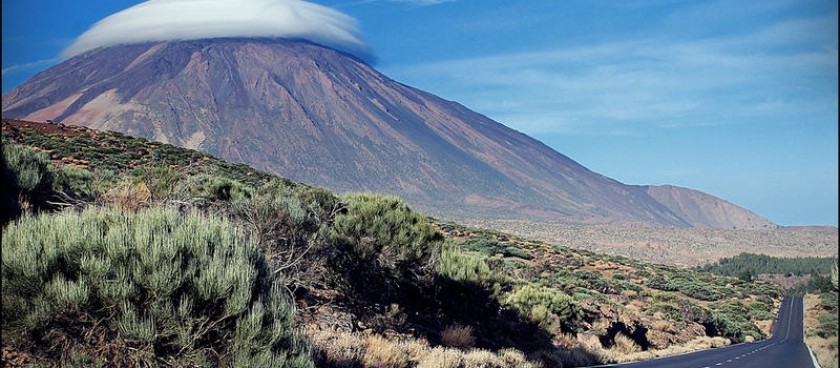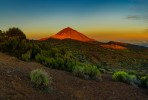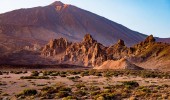- #TFN01
- Prices*:
Free - * - opening and closing times as well as entrance prices, are subject to alterations without notice. Visitors are advised to check before visiting.
- 28.2724800, -16.6425172 Copy to clipboard Copy
-
#Nature Trails , #Nature Objects
If measured from the ocean floor, its height of 7,500 m (24,600 ft) makes Teide the fourth-highest volcano in the world, and is described by UNESCO and NASA as Earth's third-tallest volcanic structure. However, as Teide was formed just 170,000 years ago due to volcanic activity following a catastrophic landslide, Teide's base is actually situated in the Las Cañadas crater (the remains of an older, eroded, extinct volcano) at a height of around 2,190 m (7,190 ft) above sea level. Teide's elevation above sea level makes Tenerife the tenth highest island in the world. Teide is an active volcano: its most recent eruption occurred in 1909 from the El Chinyero vent on the northwestern Santiago rift. The United Nations Committee for Disaster Mitigation designated Teide a Decade Volcano because of its history of destructive eruptions and its proximity to several large towns, of which the closest are Garachico, Icod de los Vinos and Puerto de la Cruz. Teide, Pico Viejo and Montaña Blanca form the Central Volcanic Complex of Tenerife.
The volcano and its surroundings comprise Teide National Park, which has an area of 18,900 hectares (47,000 acres) and was named a World Heritage Site by UNESCO in 2007. Teide is the most visited natural wonder of Spain, the most visited national park in Spain and Europe and – by 2015 – the eighth most visited in the world, with some 3 million visitors yearly. In 2016, it was visited by 4,079,823 visitors and tourists, reaching a historical record. Teide Observatory, a major international astronomical observatory, is located on the slopes of the mountain.
Name and legends
efore the 1496 Spanish colonization of Tenerife, the native Guanches referred to a powerful figure living in the volcano, which carries light, power and the sun. El Pico del Teide is the modern Spanish name.
Teide was a sacred mountain for the aboriginal Guanches, so it was considered a mythological mountain, as Mount Olympus was to the ancient Greeks. According to legend, Guayota (the devil) kidnapped Magec (the god of light and the sun) and imprisoned him inside the volcano, plunging the world into darkness. The Guanches asked their supreme god Achamán for clemency, so Achamán fought Guayota, freed Magec from the bowels of the mountain, and plugged the crater with Guayota. It is said that since then, Guayota has remained locked inside Teide. When going on to Teide during an eruption, it was customary for the Guanches to light bonfires to scare Guayota. Guayota is often represented as a black dog, accompanied by his host of demons (Tibicenas).
The Guanches also believed that Teide held up the sky. Many hiding places found in the mountains contain the remains of stone tools and pottery. These have been interpreted as being ritual deposits to counter the influence of evil spirits, like those made by the Berbers of Kabylie. The Guanches believed the mountain to be the place that housed the forces of evil and the most evil figure, Guayota.
Guayota shares features similar to other powerful deities inhabiting volcanoes, such as the goddess Pele of Hawaiian mythology, who lives in the volcano Kīlauea and is regarded by the native Hawaiians as responsible for the eruptions of the volcano. Same was true for the ancient Greeks and Romans, who believed that Vulcano and Mount Etna were chimneys of the foundry of the fire god Hephaestus (Vulcan in Latin).
In 1492, when Christopher Columbus arrived at the island of Tenerife, his crew claimed to see flames coming from the highest mountain of the island (Teide).


